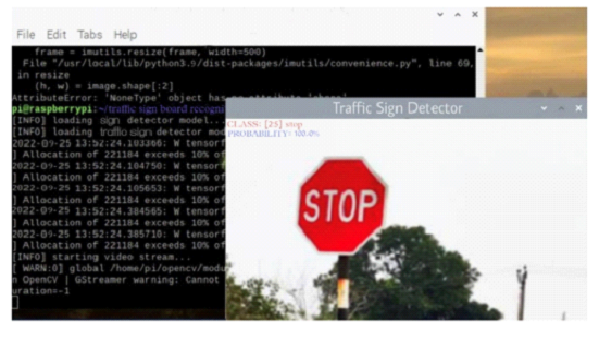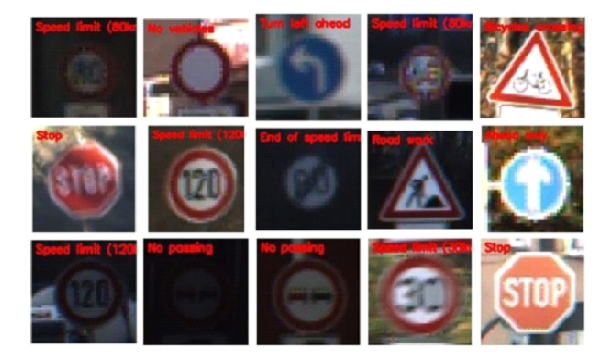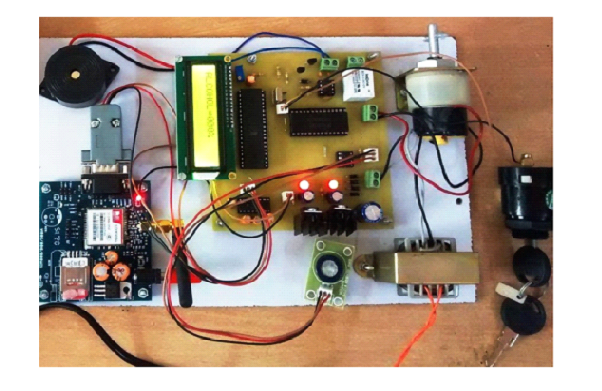Alcohol Detection and Traffic Sign Board Recognition for Vehicle Acceleration Using CNN
| Abstract: | Introduction |
| Drunk driver detection is very important in today’s life for security aspects. It is very tedious work for real-time scenarios. Recently numerous Internet of Things (IoT) based systems have achieved good accuracy for detecting such events with location details. Consequently, drunk driving is a major cause of traffic accidents in almost every nation globally. The goal of the Alcohol Detector in Car project is to keep passengers safe while driving. They should execute this project inside the vehicle. The advanced driver assistance systems, often known as ADAS, are able to conduct fundamental tasks like object identification and categorization in order to warn drivers about things like vehicle speed regulation and road conditions. Deep learning is now being used in ADAS technology as a result of recent advancements in both the hardware and software platforms. The presence of traffic signs is an essential component of road infrastructure. Consequently, the identification and categorization of traffic signs is a particularly critical problem for autonomous cars. There will be a variety of hardware and software components in this system, such as the MQ-3 sensor, which will detect the alcohol level and provide information to the processor, after which it will indicate a buzzer and display on the screen that the driver is intoxicated. If the driver is intoxicated, the vehicle will stop working, or the engine will turn off, ensuring there is no chance of being drunk and operating the vehicle. CNN has been used for feature extraction and classification. CNN has been used for classification with multiple hidden layers and custom optimization algorithms. Finally, comparative analysis demonstrates the effectiveness of the proposed system with various state-of-art methods and algorithms. | The advancement of employing an alcohol detector, a tool that monitors changes in the ambient air's alcoholic gas composition, is covered in this article. The sensor will then calculate how much alcohol is present in the user by counting the number of alcoholic vapours. Given that it measures an individual's breath alcohol content, this device is often known as a breath analyzer. Law enforcement mostly uses the equipment to ascertain whether or not a person has driven drunk. Depending on how much alcohol is present, the MQ-3 sensor will analyze its contents, which will cause the output voltage to increase. If the output voltage rises enough, the microcontroller's input pins will switch from active low to active high. Over 1.55 lakh people died in car accidents in 2021, according to research; 12,500 people die from alcohol-related causes per year on average. As a result of the new year's generation of cars, they need an automated system. Consequently, the traffic sign board will immediately identify the traffic sign and warn the vehicle of it. For instance, it will be informed of the signboard if a "U-TURN" sign is there. They will use this method to lessen traffic accidents. The tool will be able to distinguish between a traffic signboard and alcohol. This system makes use of both hardware and software. Traffic sign recognition, which gives helpful information like directions and warnings for autonomous driving or driver assistance systems, requires the detection of traffic signs, which has historically been a challenge for intelligent cars. Traffic signs may be utilized as separate markers for mapping and localization in navigation systems for autonomous cars, which have recently given traffic sign recognition more attention. Contrary to the haphazard appearance of natural markers like corner points and edges, traffic signs adhere strictly to standards for their forms, colours, and patterns. |
| Background: | Project Work: |
|
Alcohol detection and traffic sign recognition are two separate applications of computer vision, each with their own unique set of challenges and solutions. However, both can be approached using Convolutional Neural Networks (CNNs), a type of deep learning model specifically designed for image analysis.
Alcohol detection involves identifying whether a driver is under the influence of alcohol, typically through the use of a breathalyzer or blood test. However, researchers have explored the possibility of using computer vision to detect signs of intoxication from a driver's facial expression or behavior. CNNs can be trained to analyze images or video footage of a driver's face or behavior, and identify patterns or features that indicate intoxication
|
This system is used to detect alcohol and to recognize the traffic signboard. In this we used a combination of some hardware and software.in that we use the raspberry pi as the processor because it is cheaper with good processing power and little bit fast as compared to another processor.
MQ—3 Sensor is used for the detection of alcohol; the feature of this sensor is that it is highly sensitive to alcohol and less sensitive to benzine with fast response. In it, there is a measuring electrode and heaters are fixed into it which is made of plastic and stainless-steel net. For example, some air alcohols are collected in MQ sensor then it gets burn and because of that burn wafers by which it can detect alcohol.
|
| Result: | Conclusion: |
   |
This study illustrates how Internet of Things technology and an unsupervised learning technique may be used to identify intoxicated drivers. According to the information presented in this paper, an efficient solution is presented in order to develop a smart system for vehicles. This system will monitor various parameters of the vehicle in between regular periods and will send this data to the base unit using a hardware platform that consists of a PIC microcontroller, an Alcohol sensor MQ-3, Ultrasonic, Eye Blink, Buzzer, GPS, MQ-6, Bump Sensor-Limit Switch, and GPS module. Additionally, the solution provides a GPS module. The proposed system would establish a connection to the base station via several methods, such as GPS, email, and parameter control, among others. Low volume and high dependability are both benefits that accrue to the Control system as a whole. The long-term objective of the system is to limit the number of accidents that are brought on by intoxicated driving via the regulation of accidents and the provision of essential information on automotive collisions. This technique enhances vehicle safety while also developing previously developed technologies, representing a successful breakthrough for the automotive industry. In preparation for future work, the system will be validated using IoT and machine learning for improved detection. Computer vision is used in this paperwork is shown in Fig 1. The camera is used for the detection or recognition of the traffic sign board with the constant frames recognizes traffic sign board Figure 1: Counter set for the image
Figure 2:Traffice sign board recognition. This system is used to detect alcohol and to recognize the traffic signboard. In this we used a combination of some hardware and software as shown in the fig.6.in that we use the raspberry pi as the processor because it is cheaper with good processing power and little bit fast as compared to another processor.
Figure 3: Components used for the prototype |
| Acknowledgement: | References: |
|
I would like to thank my teachers, Prashant Pal, Shashank Kumar Singh and Yogesh Kumar, for their guidance and support in completing my project and research paper on " Alcohol Detection and Traffic Sign Board Recognition for Vehicle Acceleration Using CNN." Their expertise and encouragement were invaluable in shaping my understanding of the topic. I am also grateful to my colleagues and peers who provided feedback and suggestions, improving the project's quality. Lastly, I thank the institutions and organizations that provided resources and infrastructure for the research. Thank you all for contributing to the successful completion of this project and publication of the research paper
|
[1] Kabir, AZM Tahmidul, et al. “The Smart Vehicle Management System for Accident Prevention by Using Drowsiness, Alcohol, and Overload Detection.” 2020 10th Electrical Power, Electronics, Communications, Controls and Informatics Seminar (EECCIS). IEEE, 2020.
[2] Tapadar, Sayan, et al. “Accident and alcohol detection in luetooth enabled smart helmets for motorbikes.” 2018 IEEE 8th Annual Computing and Communication Workshop and Conference (CCWC). IEEE, 2018.
[3] Bhuvaneswari, S., and R. Saranya. “Internet of vehicle based accident detection and management techniques by using vanet: An empirical study.” 2020 Fourth International Conference on Inventive Systems and Control (ICISC). IEEE, 2020.
[4] Kinage, Vivek, and Piyush Patil. “Iot based intelligent system for vehicle accident prevention and detection at real time.” 2019 Third International conference on I-SMAC (IoT in Social, Mobile, Analytics and Cloud)(I-SMAC). IEEE, 2019.
|
| PUBLICATION LINK | https://ieeexplore.ieee.org/document/10057863/authors |
 |
|












